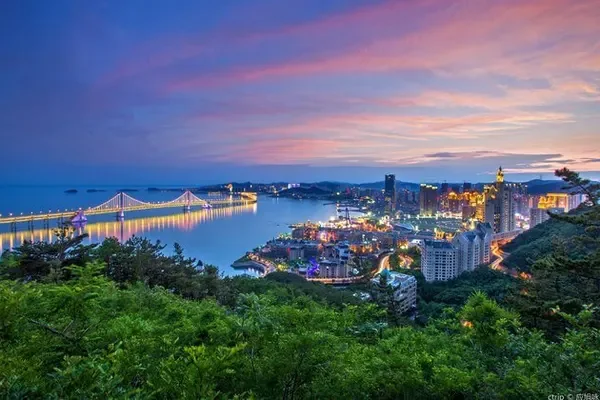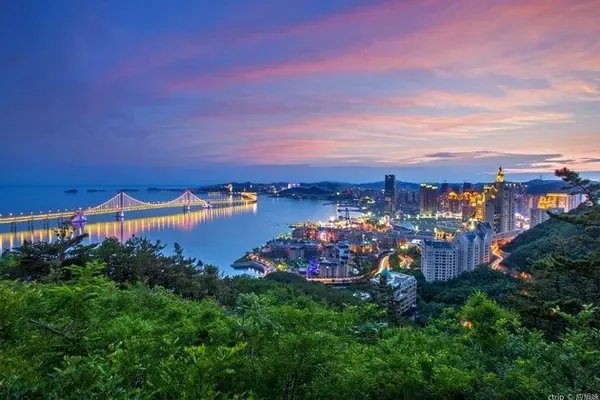China is so big, I want to visit it. Take you to a place you have been or have not been to.
From 3,000 to 10,000 years ago, ancient people wrote and drew on the rocks of Helan Mountain. What did they draw?



Helan Mountain is the "father mountain" in the minds of Ningxia people. It is located in the northwest of Ningxia and is the boundary mountain between Ningxia and Inner Mongolia. It blocks the cold current from Siberia and the eastward movement of the Tengger Desert in Inner Mongolia. It is precisely because of the obstruction of this mountain that Ningxia has achieved the reputation of "the south of the Yangtze River".



The mountain is majestic, like a group of horses galloping. In Mongolian, horses are called "Helan", so it is named Helan Mountain. The petroglyphs are pictures drawn and carved on rocks by the ancient ancestors using realistic or abstract artistic techniques over the long years, which record all aspects of ancient human social life. There are petroglyphs distributed in 70 countries around the world, and China is one of the countries with the widest distribution and richest content of petroglyphs in the world.
2012 Helankou Rock Painting Scenic Spot Ticket 60 yuan


Helan Mountain is 220 kilometers long from north to south. It is one of the areas with relatively concentrated rock paintings in my country. So far, more than 20,000 rock paintings have been discovered. Helankou, in the hinterland of Helan Mountain, is a gathering place for rock paintings of Helan Mountain. Nearly 6,000 mysterious and strange rock paintings are engraved on the rocky cliffs stretching more than 800 meters on both sides of the canyon. The life scenes of the ancestors such as grazing, offering sacrifices, hunting, fighting, and production. Helankou is not only a place rich in ancient rock paintings, but also a sacrificial center for primitive nomads. In the end, we put our sights here—Helankou, which is more than 50 kilometers away from Yinchuan.
The north and south sides of Helankou are convex and concave, which seems to be an irregular opening in the mountain due to geological changes. On both sides of the 800-meter-long valley, there is a scene in a hundred steps, and there are legends everywhere. Let's first look at the strange peaks, jagged rocks, and majestic banks of the Helankou Canyon.
Helankou Valley is like a mountain with a gap




Take a sneak peek and take you for a walk in the valley first. In front of the majestic Helan Mountain, people seem very small.






Helios Square
Entering the scenic spot, the first is the Sun God Square. It is named after the iconic rock painting in the Helan Mountain rock painting - the sun god.



The "Sacred Turtle Stone" was originally at the Helan Mountain Pass, and it moves like a turtle. The longevity of the tortoise can also ward off evil spirits. The local people use it to suppress floods and prevent floods. They also pray for children, eliminate disasters and cure diseases. Turtle Stone has experienced rain, snow, wind and frost, and a light red "heart" pattern gradually appeared on the abdomen, which said, "Heart is at peace, and longevity comes naturally", so it is respectfully called "God Turtle Stone".

Yinchuan World Rock Art Museum



The "Yinchuan World Rock Art Museum" in the scenic area is the only rock art museum in China and the largest rock art museum in the world. Integrating display, research and exchange, the museum has a collection of more than 600 petroglyph catalogs, rubbings, objects and original works of art produced at the same time as petroglyphs from more than 200 petroglyphs in 60 countries on 5 continents. Here, people can gain some understanding of the petroglyphs in the world, and can better understand the characteristics of the petroglyphs of Helan Mountain.










Years of aphasia, but stones can speak——Helankou rock painting site
In ancient times, Helan Mountain was the place where the Xiongnu, Xianbei, Turkic, Uighur, Tubo, Dangxiang and other northern minorities lived, lived and multiplied. The creation of these ancient rock paintings can be traced back to the prehistoric civilization 5,000 years ago from the Ming and Qing Dynasties. It records the life scenes of ancient humans hunting, grazing, offering sacrifices, fighting, entertainment and dancing, and copulating between 3,000 and 10,000 years ago, as well as sheep and sheep. , ox, tiger, leopard and other animal patterns and abstract symbols, full of imagination, give people a real, friendly, solemn and pure feeling, revealing the culture of primitive tribes and tribes worshiping nature, reproduction, totem and ancestors Connotation.
The rock paintings in Helankou were engraved in different periods, most of them were done by northern nomads in the Spring and Autumn Period and Warring States Period, and there are also portraits of other dynasties and the Xixia Period. There are two methods of engraving rock paintings: chiseling and grinding: the chiseling marks are clear and shallow; the grinding method is to chisel first and then grind, the lines are thicker and deeper, and the grooves are smooth and clean.
"Donkey and Sheep Picture" A donkey carries a sheep and walks calmly, with a bird flying on the upper right as a guide. This picture is unique in conception and lively in shape.

Two sheep out of the pen Two sheep are slowly coming out of the pen. The composition of the painting is unique and vivid, and it is the only rock painting with artificial buildings found in Helankou rock paintings.

The statue wall is densely populated with rock paintings, and many strangely shaped rock paintings of human faces and symbols have been carved. The most eye-catching thing is the faces of the gods on the stone walls, all of which have unique shapes and expressions.

Inscriptions in Xixia script and group portraits of petroglyphs The rock paintings are densely covered, most of which are portraits. There are inscriptions in Xixia script, which are interpretations of the rock paintings by Xixia people.

The inscription in the thirty-seventh year of Wanli in the Ming Dynasty (1609) records the rebuilding of the Helankou pass wall by the general of Ningxia Town (now Yinchuan City) in the Ming Dynasty.

Handprint picture Two left handprints, a cow kneeling on its front legs under the left handprint, and a human face under the right handprint. Above the two handprints, there is a peach-shaped human face with eyes wide open. Below is a man with arms raised. According to research, this is a contract that uses petroglyphs to express the relationship between ancient tribes. Handprints represent rights. The tribe on the left has been conquered by the tribe on the right, and the tribe's population and livestock will belong to the tribe on the right. The peach-shaped human face is actually a god, and with the testimony of gods and people, this contract will be valid forever.

The rock paintings that have experienced vicissitudes of life are severely weathered, and the surviving pictures are slowly blurred. Human face, sheep, horse and a lot of symbols. The largest human face on the right has a strange shape, with raised beards on both sides of the cheeks.

"Sun God" rock painting The iconic rock painting of Helan Mountain, the masterpiece of Helan Mountain rock painting, and the most unique "Sun God" rock painting in Asia. It is carved on the stone wall at a distance of more than 20 meters from the ground. Its head has radial lines, its face is round, its eyes are ringed heavily, and its eyelashes are long and piercing. In order to shorten the distance between people and the sun and get the blessing of the sun, the primitive ancestors personified the sun for sacrifice. Through these pictures with original, regional and national characteristics, we can feel the fresh artistic vitality passed on to us by our ancient ancestors.


Australopithecus watching the sky

Jiji Cave is shaped like a boy's genitals, so it is called Nijiji, hence the name Jiji Cave, also known as Guanyin Cave. The mountain people in Helankou have an old custom of touching dicks. On the Avalokitesvara Days of February 19, June 19, and September 19 of the lunar calendar, mountain people come to Guanyin Cave to seek blessings.

Ancient Military Facilities

Walking to the depths of Helankou Valley, I did not expect that there would be gurgling springs flowing out. It turns out that the inexhaustible mountain springs come from waterfalls, which is a great spectacle.



There are wild blue sheep in the scenic area, and there is still a good chance of seeing them.


Totems, ancient houses, wild trees, clear springs, etc. Wander in the Helan Mountain Rock Painting Site Park, appreciate the majesty of Helan Mountain, the beauty of nature, and the mystery of ancient rock paintings. What are you waiting for?
Please pay attention to more content, Lotto Leyou
Sohu Account\Baijia Account\Daily Express\NetEase Account\Qu Toutiao\Today’s Toutiao\Sina Highlights\Dayu\Yiandian Information\Zhihu\Sina Weibo

